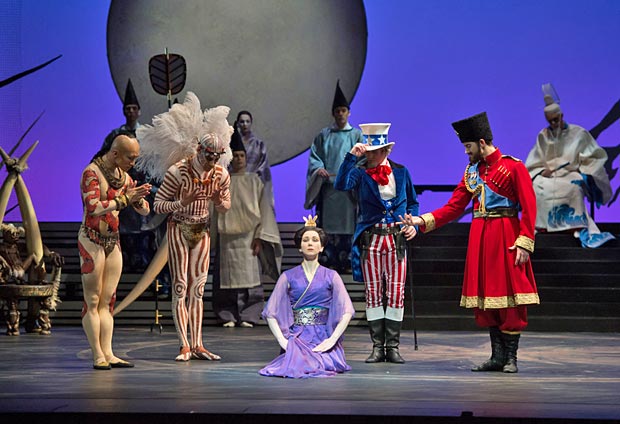
© Bill Cooper. (Click image for larger version)
Birmingham Royal Ballet
The Prince of the Pagodas
Salford, Lowry
1 February 2014
www.brb.org.uk
www.thelowry.com
The Prince of the Pagodas often feels like the complicated and needy child of British Ballet. A glorious custom ballet score by one of our greatest composers (Benjamin Britten), a story ballet (which we adore) and yet two world class choreographers (John Cranko and Kenneth MacMillan) failed to deliver an enduring classic – or anything near it, really. For more of the background to these earlier attempts I’d urge people to read Jann Parry’s review of the last revival of MacMillan’s version – full of insights into the work’s life to-date.
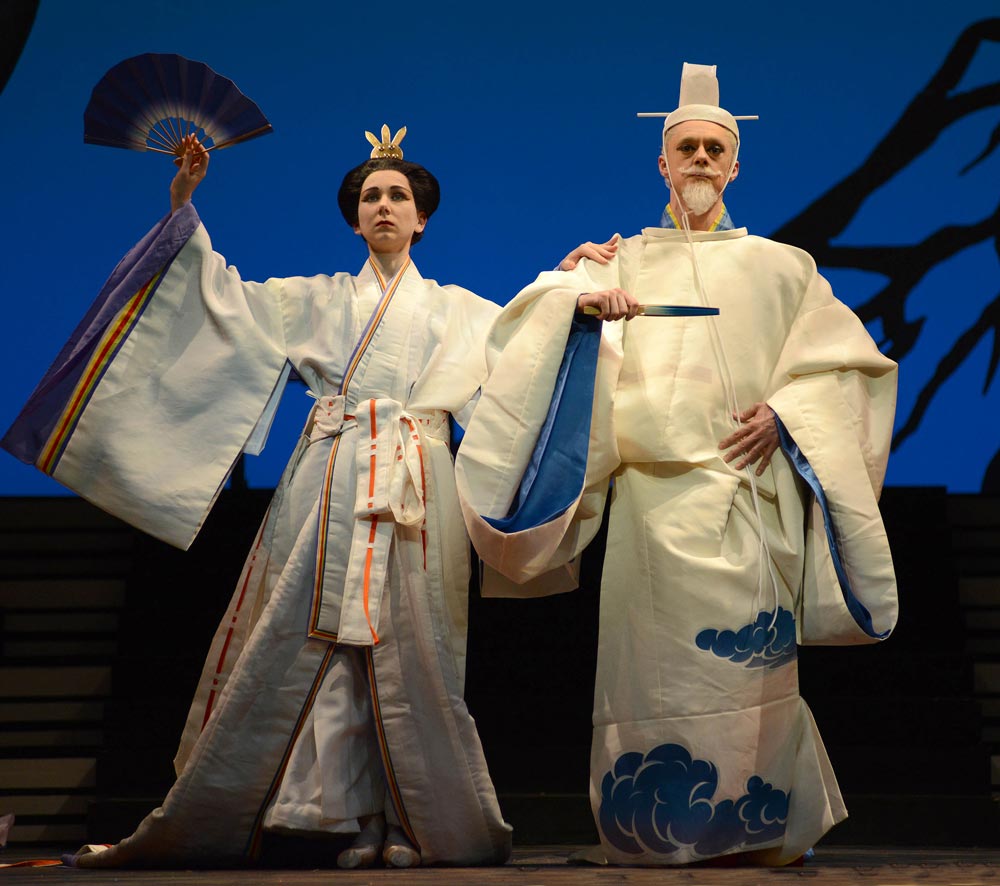
© Roy Smiljanic. (Click image for larger version)
So has David Bintley turned it all around in his version for the National Ballet of Japan, recently given its UK premiere by Birmingham Royal Ballet? Well yes and no: if MacMillan’s version was a roller coaster ride of incredibly inventive highs, and tedious lows, Bintley has created a solidly entertaining family work that never bores but never soars to another emotional level, either. It’s not for want of thinking – since 1979 Bintley has looked to do something. He wanted to use all the score if he could but never felt the original story could be made to work. His final solution is to change it from a story based around rival good and evil sisters (Princesses Rose and Epine) with a mysterious Salamander Prince (of the Pagodas) coming to the rescue of the good, to a daughter and evil stepmother (Belle Sakura and Empress Epine) confrontation where the prince is the daughter’s brother – thought to have died as a child but actually changed by a spell into the Salamander Prince. Good wins over evil in both plots, but in Bintley’s the celebration is of brother and sister restoring good governance and a happy family rather then 2 spirits being united in love. Hard to have the big final pdd for siblings doing the right thing really – if Bintley clearly feels otherwise. It’s a shame because for much of the ballet one is wafted along by confident, pacy storytelling, well supported by the music and solid classical movement. It doesn’t stick out as tough music on top of a tough ballet and that’s a huge accomplishment in many respects.
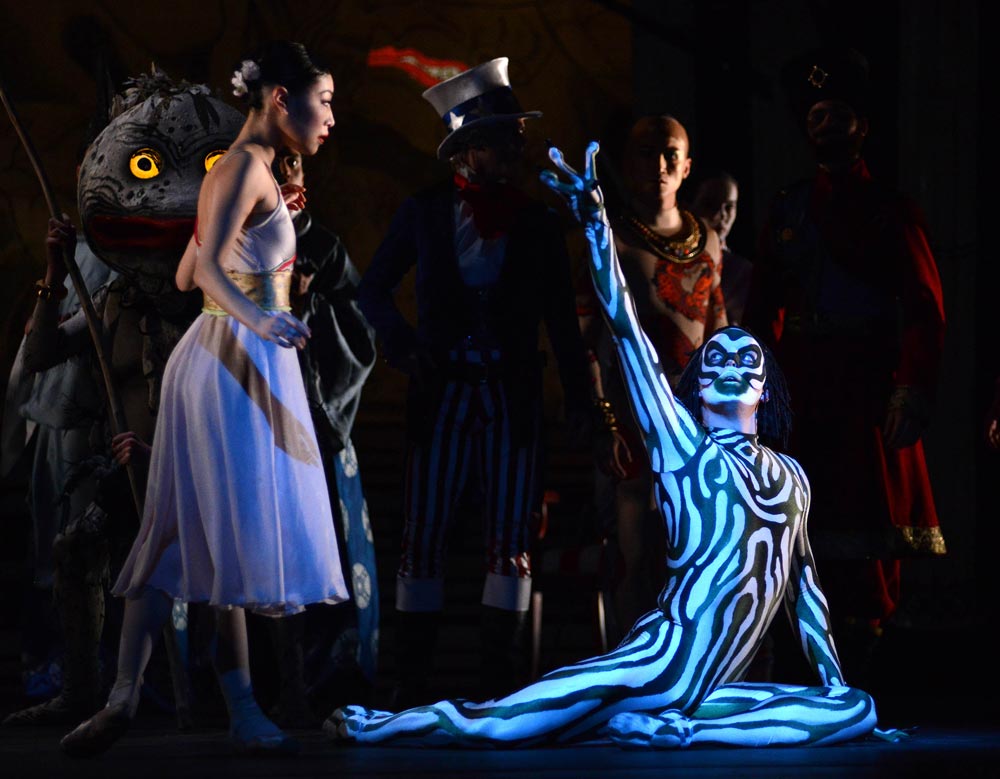
© Bill Cooper. (Click image for larger version)
Bintley sets his action in Japan with all its myths and imagery to the fore. As earlier, there are still 4 unsuitable Kings (from USA, Russia, Africa and the Orient) looking for the daughter’s hand, the Emperor/King is hugely doddery and the Fool is still there. In fact the fool rather sets the tone on this child-friendly production, wandering out before the show actually starts and nonchalantly sitting on the edge of the stage looking with interest into the orchestra pit and then out at us, pointing and waving at various members of the audience. And at the close of the work Bintley cleverly ends with the Fool back above the pit – all our journeys are complete. In between there is much solid storytelling, fighting and the rite of passage for Belle Sakura. I particularly liked the way the Salamander Prince reveals to Sakura that he is her brother in another form – Bintley uses young Elmhurst students to great effect. The act 3 decadence between Epine and the 4 Kings is also earthy – a meaty role for Elisha Willis. Tyrone Singleton (South/Africa) comfortably outshone the other Kings dance-wise – what a jump and stage presence. Leading it all out was Momoko Hirata (Princess Belle Sakuma) and Joseph Caley (Salamander Prince) and they do a fine job, even if the plot does not allow then to sweep each other off their feet. But what I remember more overall are the designs of Rae Smith (think War Horse), inspiring affairs that do more than support the story – they satisfyingly help lead it. The 4 Yokai (supernatural monsters) that keep cropping up are delightfully offbeat, but just part of a colourful cast of sea creatures and other characters who dance in the Act 2 journey through Earth, Air, Fire and Water.
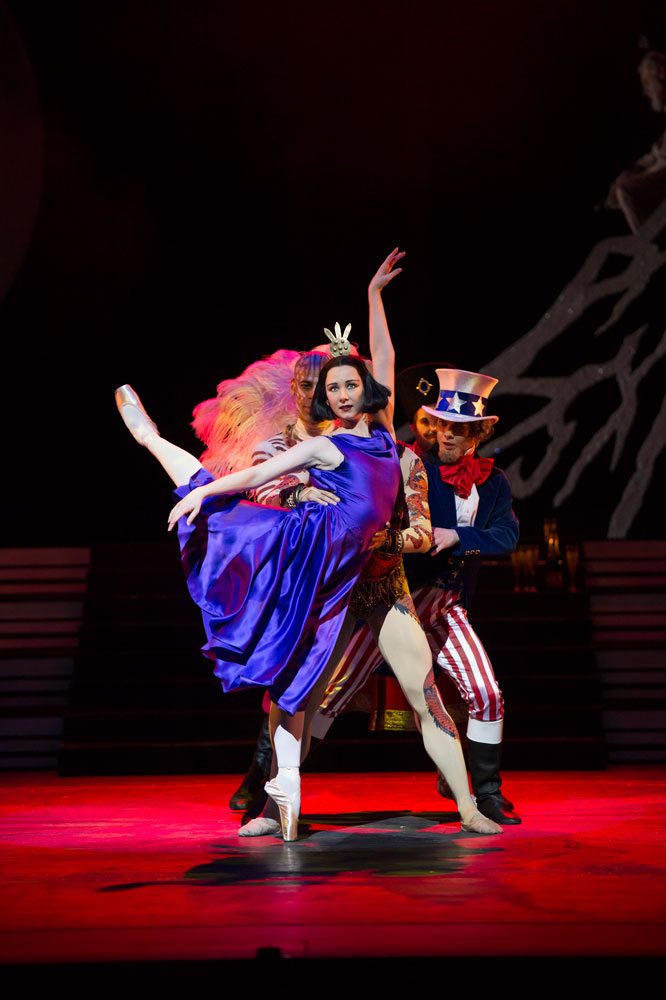
© Bill Cooper. (Click image for larger version)
Casting my mind back to the MacMillan version, I think of his brilliantly-drawn four Kings dancing solos and with Rose (Sakura here) – chilling movement for acutely observed, flawed, characters. And I think of the slithery Salamander movement for Jonathan Cope (nowhere near echoed here) and the gamelan section and moving of the clouds – it’s all grown-up, dark and seems fresh and vivid even now. With Bintley I don’t remember so much bar a solid family ballet (like the Aladdin that preceded it) and an audience clearly enjoying what is a new and colourful fairy-tale.

© Roy Smiljanic. (Click image for larger version)
All up, Bintley has rescued great music from being considered undanceable and it’s a work that will likely endure without anywhere near so many question marks over it as the Royal Ballet’s MacMillan version. But ultimately the score is very grown-up and I hope a darker, more grown-up, ballet can be wrestled from it – it remains a prize worth fighting for.
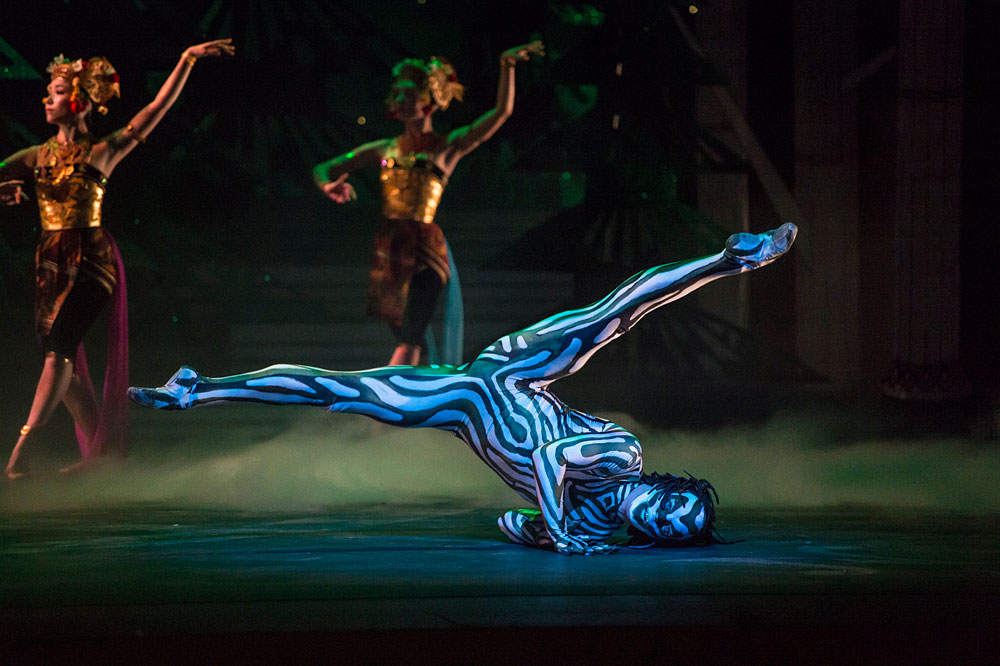
© Bill Cooper. (Click image for larger version)











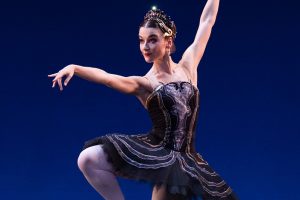

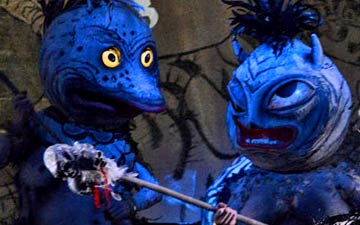
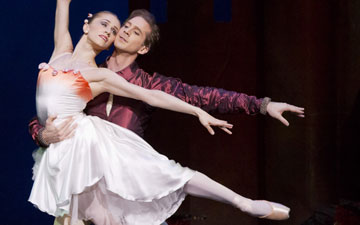


You must be logged in to post a comment.